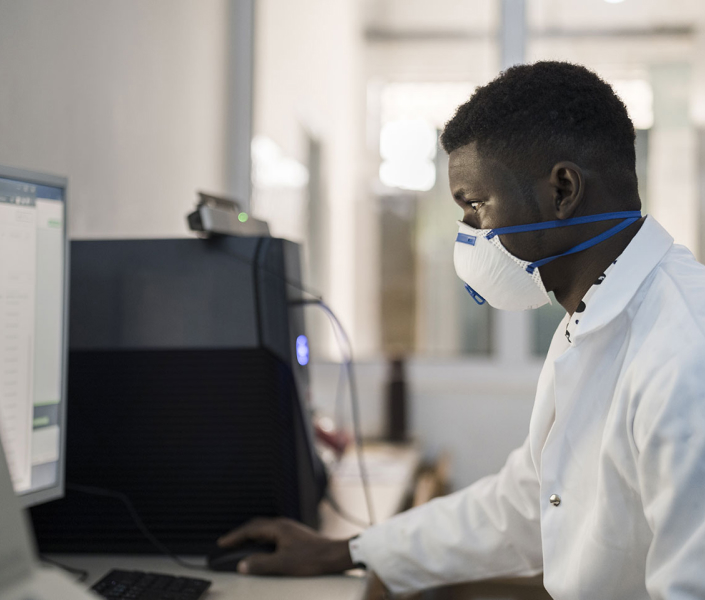Progress report African region 21 - 4. Building on monitoring and evaluation programmes

During a pandemic, several methodologies are utilized simultaneously to assist policy-makers in making decisions to safeguard the well-being of the population and to monitor the trajectory of the outbreak. As global specialists in public health management, the WHO AFR team is engaged in assisting countries to collect and analyse global and country pandemic response indicators. Examined vis-à-vis actions or processes, these indicators show evidence of progress and reveal gaps, while enhancing accountability and transparency.
The COVID-19 Strategic Preparedness and Response Plan (SPRP) Monitoring and Evaluation Framework (COVID-l9 M&E Framework) focused on the 11 intervention pillars, making use of key response indicators. The ‘whole of organization’ and ‘whole of response facets’ approaches provided an innovative, full-picture perspective of the COVID-19 pandemic response in the African Region, despite reporting challenges. These approaches gained added importance in light of the number of political, environmental, and/or socioeconomic crises simultaneously reported during the period, which affected national response capacities.
To assess and showcase progress against the targets set in the response, the intervention pillars of the SPRP 2021 produced periodic disaggregated dashboards and operational updates. The dashboards provided donors, United Nations agencies, and partners with a more complete picture of the crisis, based on country level information, while recognizing the regional, and indeed global characteristics of the protracted pandemic. Indeed, several areas overlap and contribute to M&E. For example, to assist Member States to adjust epidemic management, and to ensure sufficient funds, personnel, equipment, and supplies are available to address the crisis, the dashboards provide an overview of joint testing capacities, patient caseloads, health worker infection rates, incidence of new variants, community and border, and national surveillance efforts, in addition to pandemic communication and information.




